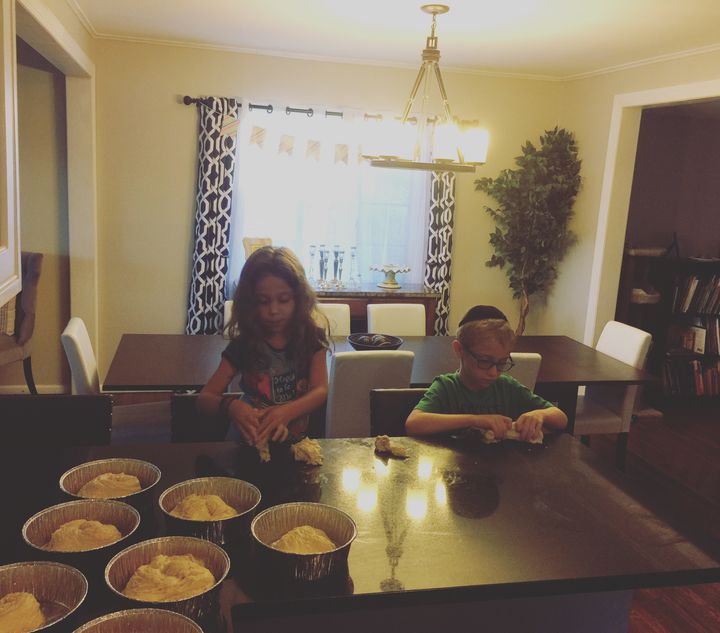By: Lauren Brukner, MS, OTR/L
Did you know that October is Sensory Processing Awareness month? Yay!! As a sensory kid who turned into a sensory adult, I can truly say that I can understand sensory integration’s power and ability to transform lives (that is, when done correctly, under supervision of a licensed OT, and only if needed).
There are so many simple and unacknowledged ways that we, as parents, caregivers, therapists, teachers, and educators, provide sensory information to our children on a consistent basis throughout the day. Sometimes, when our kids are hyper-reactive to certain stimuli, boy are we aware of it! (Ever tried bathing a child with tactile hypersensitivity where you accidentally used the wrong cup and a splash of water went into their eyes, instead of the usual drip? My neighbors probably heard me on the next block!)
Here are a few simple and powerful ways that you have and can continue to help your child integrate sensory integration on a daily basis:
1. Go to the park! Pulling, pushing, sliding, and spinning are fun and social ways to integrate propriceptive (joint traction and distraction) and vestibular (balance and motion sense), where your child has control.

2. Does your child dislike hair-brushing? Let him/her do their own hair. The first time I tried this with my son, the change in this previously difficult ritual was instantaneous. He was so proud. Giving him control of tactile stimulation made this less scary for him. Plus, he looked cute!

3. Do you ever have spare boxes laying around? Do your kids ever play inside them? Amazing! Not only are they utilizing imaginary play and social skills (if in a group), but are getting deep pressure from the boxes themselves.

4. Bath time. Did you know that playing in water is a tactile-based activity in and of itself? Three things that have worked for my sensitive younger two kids: a flexible cup that flattens near the forehead to minimize water in the eyes, lots of toys, and allowing my kids to take as much of an active role in the shampooing and rinsing as possible.
5. Helping in the kitchen. Have your child participate in as much of the ‘dirty work’ of baking as possible. I have found that my kids have been especially motivated to bake foods that they love, such as chocolate chip cookies. You can start with gloves, and when your child is ready, they can choose when, and if, they want to take them off.

6.Bikes, scooters, trikes. All those riding gear have your child integrate vestibular input. Are they able to scooter or bike to school if you live nearby? That may be a good way to start the day off right.

7. Pet beds can make for great (and reasonably-priced) seats, especially for those kids who like to feel cuddled (like my youngest, here).

8. As a family, hug often (with warning to those who need it). Show and share the love.

9. Have your child carry something heavy as part of their daily routine (if medically cleared). At home, examples are pushing in and pulling out chairs, pushing a heavy laundry basket, etc. see below for my oldest daughter’s daily ritual of lovingly schlepping our 3-year old ragdoll cat, Humphrey, across the house.

10. Finally, don’t forget to play along (when you can!) You may be surprised how great you feel!


Lauren Brukner is a Senior Occupational Therapist and published author who lives in New Jersey with her husband and three children, ages 8, 7, and 5. She currently works as a Senior Occupational Therapist and evaluator in the NYC Department of Education. Lauren is a published author with Jessica Kingsley Publishers, and has appeared as a guest on The Autism Show, The Manhattan Neighborhood Network's School-Home Connection, and The Matt Townsend Show. Her books have been listed as resources on websites such as Real Simple Magazine, Inc. Magazine, Psych Central, Marie Claire, Everyday Health, AOL's Health and Wellness, MSN Health, Mothering.com, About.com, InOurHands.com, ScaryMommy, and Friendship Circle, as well as numerous school district curricula around the world. Her second book recently won the Mom's Choice Award-gold seal. Lauren specializes in sensory integration and self-regulation strategies for children and young people, and their implementation in home, school, and community settings. She holds advanced training and certification in Integrated Listening Systems, and is a Certified Screener for Irlen Syndrome/Scotopic Sensitivity. Lauren is the author of The Kids' Guide to Staying Awesome and In Control and How to Be a Superhero Called Self-Control, both published by JKP. She is the author of Stay Cool and in Control with the Keep-Calm Guru, that just came out in September (also with JKP). She is also a contributing author to Huffington Post and Autism Parenting Magazine, and blogs at www.awesomeandincontrol.com.
